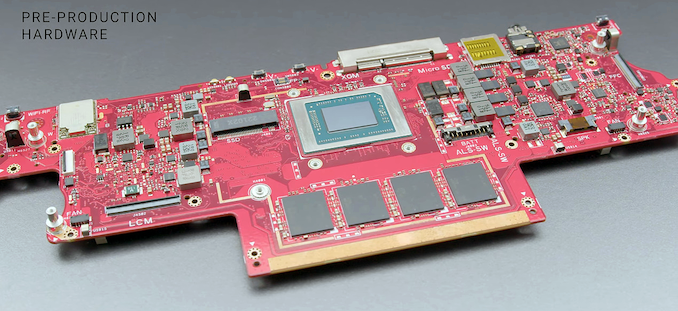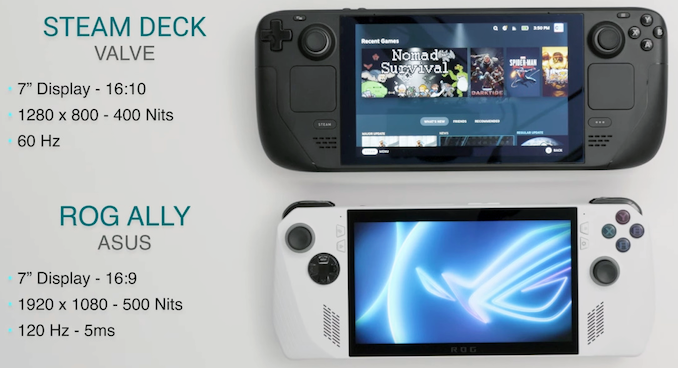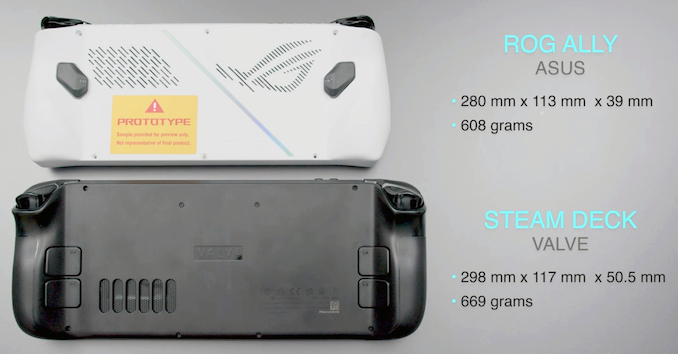Asus has I started teasing Its own mobile game console, the ROG Ally, which the company is positioning as a cutting-edge offering for the portable PC gaming market. With the ROG Ally, Asus is definitely trying to join the rise of x86-based mobile game consoles, which were inspired by the Steam Deck system and spurred on by game developers’ enthusiasm for optimizing their titles for these low-powered portable PCs.
This week’s reveal, which included a suspiciously timed April Fools’ joke that was, in fact, no joke, less of an advertisement and more of a joke about what Asus is working on. As such, Asus has not revealed many detailed specifications, let alone a release date or pricing. Still, the company feels confident enough in the product at this point that it’s showing off a prototype to whet gamers’ appetites ahead of what’s presumed to be a proper release later this year.
Starting at the heart of the Asus handheld console, the CPU and GPU are the cornerstones of every gaming system. So, for the ROG Ally, Asus has picked up what they call a custom AMD system on chip that features a general-purpose Zen 4 core plus an integrated RDNA 3-based GPU. The SoC is built by TSMC on one of its own N4 process technologies ( 4nm class), though its configuration is unknown and we have no idea if ROG Ally is using what’s just a semi-custom configuration of one of AMD’s Phoenix APUs, or if it’s actually using a truly custom-built SoC with certain perks exclusive to the console.
(Image credit: Dave to dr)
Asus ROG Ally comes with a proprietary connector that is divided into two parts: one part transmits PCIe 3.0 x8 data, while the other part is a USB-C connector responsible for transferring power and USB data. This connector, in turn, can be used to attach a file Asus ROG XG Mobile Dock with an external GPU (up to a GeForce RTX 4090 Laptop GPU) and external display connectors, essentially turning your mobile game console into a high-performance desktop gaming system. While most mobile game consoles can work with external displays and some can also attach an external GPU (albeit with a few tricks), having this capability enabled by default is one of the key features Asus relies on to differentiate the ROG Ally .
(Image credit: Dave to dr)
Alloy’s custom APU, in turn, will be used to power a 7-inch Full HD (1080p) display, which offers a maximum brightness of 500 nits as well as a refresh rate of up to 120Hz. The inclusion of such a high-performance display on a battery-bound device is certainly an interesting choice, and while it might seem like overkill at first glance, Dave to drwho was one of only two people to get an early look at the console, says the integrated GPU could actually benefit from a higher refresh rate.
In terms of other hardware specs, the Asus ROG Ally console uses soldered LPDDR5 memory (most likely), M.2-2230 NVMe SSD, Wi-Fi and Bluetooth adapter, MicroSD card slot, USB Type-C port for charging and display output, and a TRRS audio jack for headphones.
(Image credit: Dave to dr)
When it comes to software, the Asus ROG Ally runs Microsoft Windows 11 and should be compatible with all contemporary games developed for the Windows platform, including games available from Steam, Epic Games Store, and Xbox Game Pass. This is of course an important trump card that Asus ROG Ally has on Valve’s Steam Deck, which runs a custom version of Linux that isn’t compatible with all games — but making desktop Windows work well with laptops also comes historically with its own laptops. set of challenges.
With all that said, the Steam Deck still beats the ROG Ally when it comes to ergonomics, according to Dave2D. However, the Asus portable game console is quieter and can run cooler when running in 15W mode.
(Image credit: Dave to dr)
The Asus ROG Ally gaming console sure looks great from a hardware point of view. Meanwhile, its software is in the early stages of development, according to Dave2D, which indicates that this software won’t be available anytime soon. This is probably why Asus decided not to reveal the final specifications of the game console and only gave it to YouTubers for a test run.
Asus reportedly says the price of the ROG Ally controller will be competitive, although that is a pretty vague statement as it runs twice as fast as Valve’s Steam Deck ($699) and is almost 50% more expensive (say $999-$1099). , one might say that because the price-performance ratio is very good, its price is competitive. Meanwhile, the good news is that Asus will launch its unit globally.
In any case, Asus’ attempt to enter the gaming laptop market looks inspiring from a hardware point of view (that is, on paper). It remains to be seen how comfortable the console will be to use, as well as how much it will end up costing and how long the high-spec device will last on the go.

“Typical beer trailblazer. Hipster-friendly web buff. Certified alcohol fanatic. Internetaholic. Infuriatingly humble zombie lover.”



